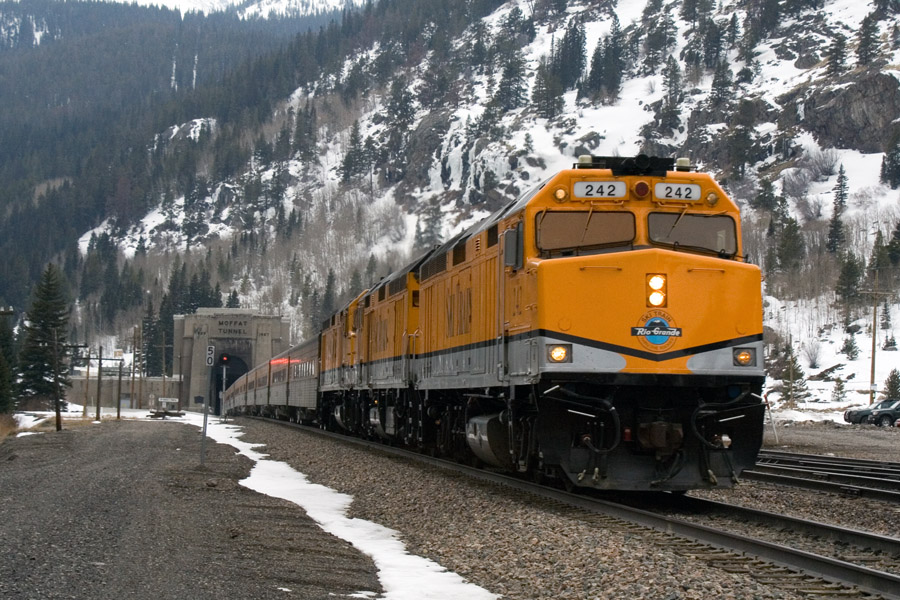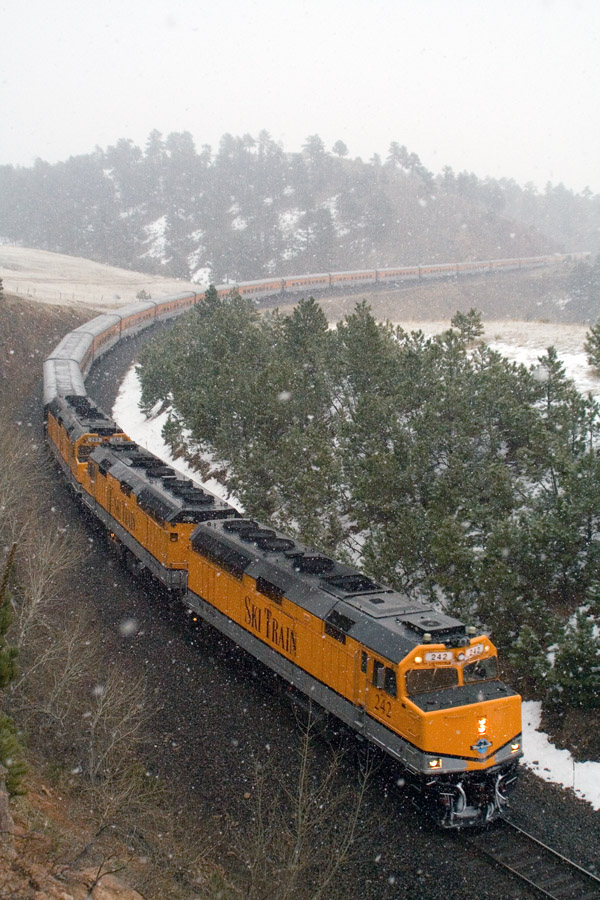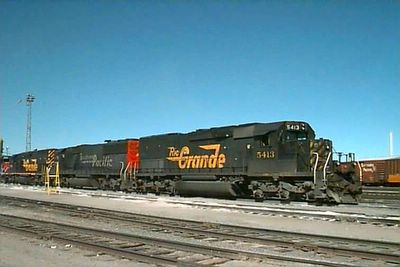
The chase sequences with the horse and cars were shot outside Antonito, Colorado, on the San Luis Valley floor. Most of the sequences on board the train were shot in the high country near Cumbres Pass. One sequence required Indiana Jones to grab onto a water spout used to fill the engine tenders and swing out and back onto the train. It was necessary to construct a set on the line in a valley near Lobato on the west end of the line above Chama. The set was left standing after filming had concluded.
The set has since decayed quite a bit. It is seen here in 2004.
The odds of more movies being shot in Colorado using backdrops like the C&TS has increased somewhat with the approval of $500,000 in the Colorado state budget to entice filmmakers to film in Colorado.
Perhaps the best investment of money is the $1.5 Million in the Colorado budget earmarked for track improvements to the Cumbres & Toltec, with matching funds from New Mexico. With the improvements, travel time for the length of the trip would be reduced from six hours to as little as three hours. The bus ride back to the originating station would still take an hour. Future tourists will still get to experience the grandeur and beauty of the Colorado and New Mexico high country behind authentic steam engines, but it will not take all day long to do it. This is important because the shorter schedule will work much better than the Thursday-only Cinder Bear Express in attracting families to ride the train. Besides, hugging children with a costumed character -- especially one without a single movie to his name -- only gets you so far.
This new infusion of cash, along with $750,000 over the next two years for operating expenses looks to rehabilitate the line, devastated by mismanagement, the constant change of ownership, and the effective cancellation of the 2002 season by the Federal government over fire safety concerns. The new management company, appropriately named the C&TS Management Corp., was appointed in March of this year. It has a former president of the Friends of the C&TS as one of its principals, along with a former vice president of marketing for the Durango & Silverton.
Still, with all this going for the beleaguered railroad, only time will tell if the development needed at both ends of the line in Antonito and Chama will materialize. Improving the destinations will help attract non-railfan families to the area and possibly improve the railroad's bottom line to the point of self-sufficiency. Unfortunately, the tenuous relationship between the State of Colorado and the C&TS has shown potential developers very little in terms of stability, something an investor seriously considers when looking at contingencies affecting their investment. Perhaps this latest legislation will be enough to show a change of heart in the State legislature. However, without a solid, long-term financial commitment towards making the line a first-class operation, the forecast for attracting new developers to these areas remains somewhat overcast.
The immediate future also has a bit of a cloud hanging over it. With the price of gasoline climbing, tourism will take a hit this year. American families who could afford the trip from outlying states will reconsider when they hear the prediction of gas costing nearly $4.00 a gallon. On the other hand, "local" tourism from Denver and Albuquerque may make up for the deficit as families look for other places to visit that are closer to home. Perhaps the C&TS Mgmt Corp should consider outside media like billboards in these cities as a means of boosting their immediate numbers.
Whatever this year brings, Colorado has helped stem the criticism that they aren't paying their share of the fare for the Cumbres & Toltec. They've spent smart money to build the economic health of the southern San Luis Valley.







